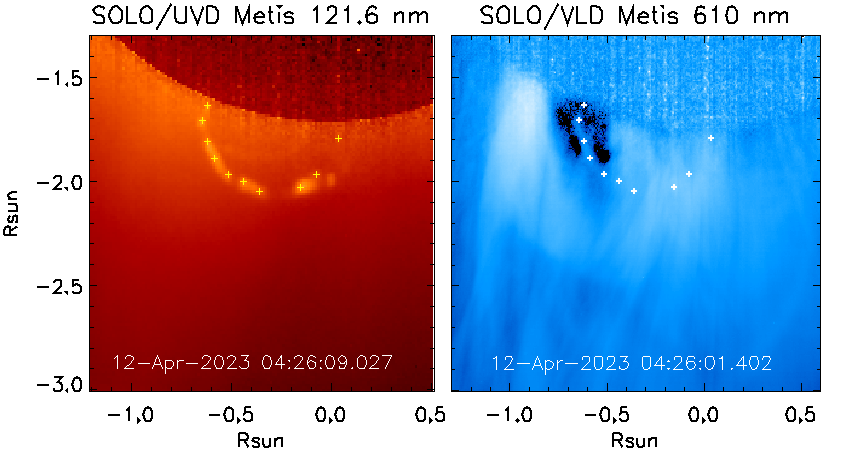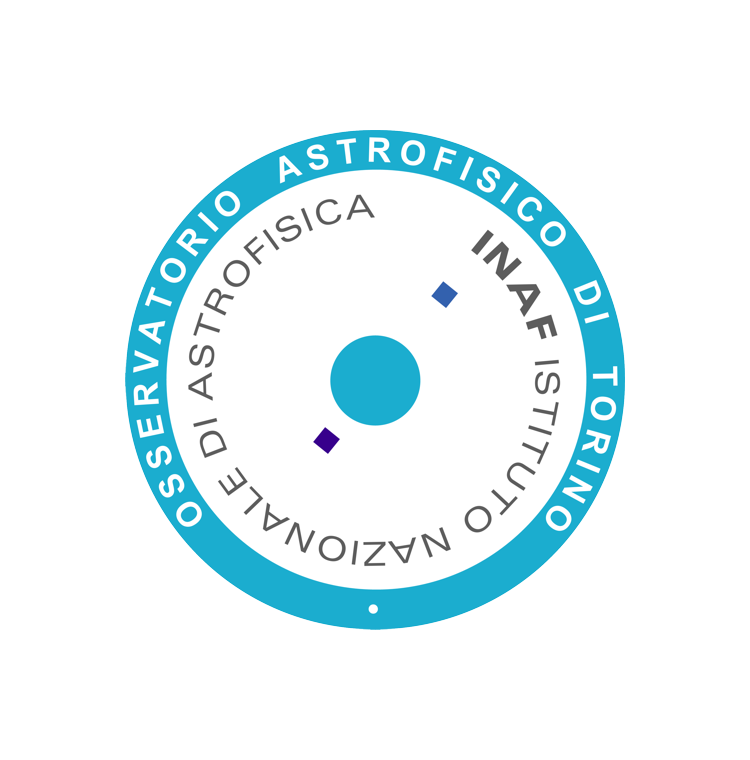
Figura: Rappresentazione della protuberanza eruttiva osservata da Metis nella corona solare nell'estremo-ultravioletto (sinistra) e nel visibile (destra)
Dr.ssa Shuting Li “Observation of an erupting prominence as observed by Solar Orbiter Metis and ASO-S SDI instruments”
Giovedì 21 Marzo 2024, ore 11.00 – Sala Seminari Villa Magliola INAF-OATo
SEGUI IL SEMINARIO IN STREAMING
Abstract
A prominence correlated with a limb CME was observed on April 12, 2023 by the multi-channel Metis Coronagraph onboard the Solar Orbiter mission.
The prominence, seen in the Metis UV Lyman-alpha images as a very bright and elongated arch propagating southward, is instead much weaker in Metis visible light (VL) images.
The elongated arch splits into several blobs and becomes fainter with time as the prominence evolves. The Lyman-alpha Solar Telescope (LST) onboard the Advanced Space-based Solar Observatory (ASO-S) mission also observed this eruption along the Earth-Sun view.
The Solar Disk Imager (SDI) onboard the LST observes the prominence lifting from the southwest solar limb, with the south leg fixed onto the Sun as the prominence expanded.
In our work, we studied the 3D position of the prominence to understand the reason for such a significant difference between the two Metis channels.
The calibrated SDI Carrington map has been used to constrain the radiative component of the Lyman-alpha emitted by the prominence plasma expanding through the corona, showing that the prominence Lyman-alpha emissions is mostly due to collisional excitation.
We applied a new approach which is independent of the UV calibration to estimate the temperature.
Results show that, different from what is expected for an expanding plasma, the temperature remains almost constant as the prominence expands, which indicates the existence of some heating processes taking place during the evolution.

